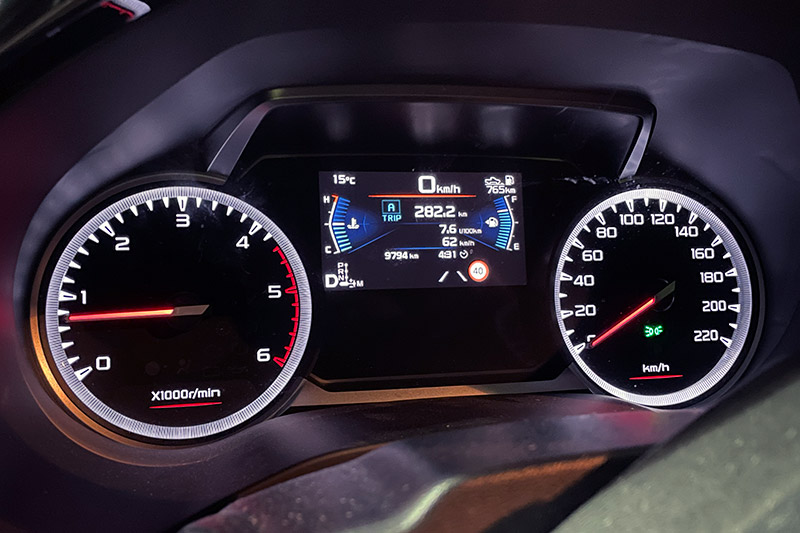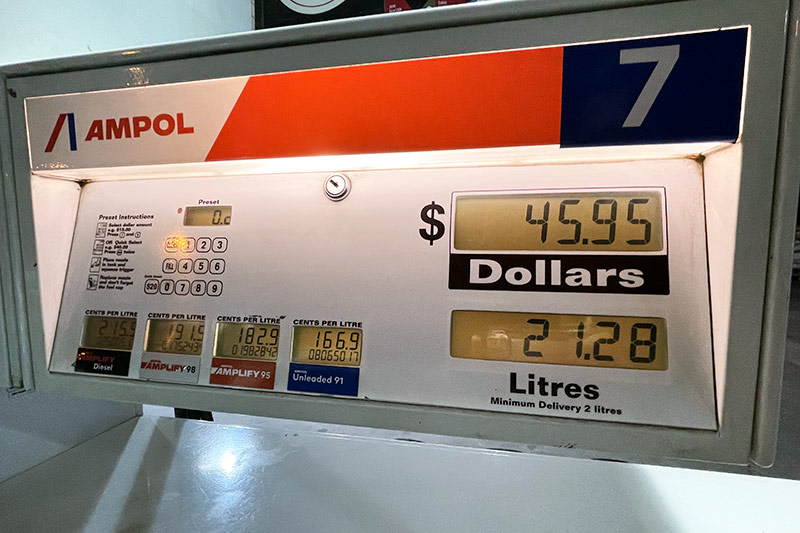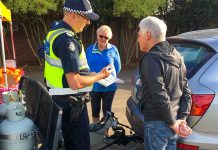Fuel. Like it or not, it’s one of the biggest expenses faced by any RVer, if not the biggest expense. It’s no secret, either, that the cost at the bowser has increased dramatically in recent months. Never did I think I’d be paying in the vicinity of $2.50 for a litre of diesel – though the price seems to have come down a little at my local servos, thankfully.
Given the increased cost, it’s never been wiser to understand the fuel economy of your tow vehicle, both hitched and unhitched.

Our official tow vehicle for the next few months is an Isuzu D-MAX LS-U+. We will be conducting numerous tests and providing updates on this vehicle over the coming issues of this magazine. Our first move was to independently verify Isuzu’s claimed fuel figure for this vehicle. The company reckons it’ll consume 8L/100km (combined city and highway driving) when unhitched. So, early this month, we hit the road.
D-MAX TEST
The first thing to point out is our vehicle payload. With me at the wheel, videographer James in the passenger seat, and some heavy camera equipment in the tub, I’d estimate about 250kg worth of payload.
Our trip began in suburban Melbourne. I filled up the diesel tank, and when the nozzle clicked off, I trickle-filled right to the brim. Then, I reset the trip-meter and entered the stop-start traffic of Melbourne, before venturing over the West Gate Bridge towards Anglesea, a beautiful town near the start of the Great Ocean Road.
After taking care of some business in Anglesea (and grabbing a pie and iced coffee), we headed back. The road from Melbourne to Anglesea is mostly freeway, with the speed limit varying between 80km/h and 100km/h, dropping to 40km/h here and there because Melbourne always seems to have road works.

As we approached the West Gate, we ran straight into peak-hour traffic. My foot was on and off the accelerator for at least 45 minutes as we plodded towards Kings Way and St Kilda Road.
Finally, after a long day, we arrived back at the same servo from that morning. The trip-meter revealed that we’d driven 282.2km.
I re-filled the tank, trickle-filling to the brim. The bowser told me that the D-MAX had used 21.28L at a cost of $45.95.
A quick calculation showed that the vehicle consumed 7.54L/100km – an excellent result that, to be honest, I was not expecting. I figured we’d see fuel consumption of around 8.5 to 9L/100km, but 7.5L/100km is a figure that most people would be happy with, I think.

There was nothing about the weather that I felt would’ve significantly skewed the results of the test, and I drove in a fairly consistent manner, according to the speed limits and prevailing road conditions.
Next, we’ll test the fuel-efficiency of the D-MAX when towing as heavy a van as we can – stay tuned!
THE FIGURES
- Kilometres travelled: 282.2 (combined highway and city)
- Diesel used: 21.28L
- Result: 7.54L/100km





